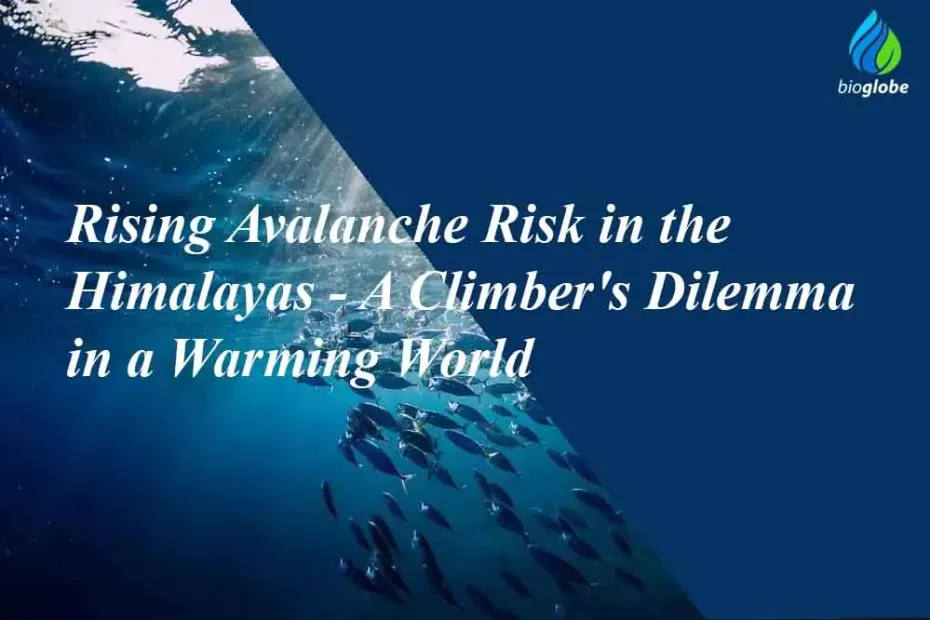Rising Avalanche Risk in the Himalayas – A Climber’s Dilemma in a Warming World
The breathtaking beauty and towering peaks of the Himalayas have long beckoned climbers and adventurers from around the globe. But as climate change continues to reshape our planet, these majestic mountains are becoming increasingly perilous. Recent research has revealed a disconcerting trend: Himalayan avalanches are on the rise, posing a growing threat to climbers and mountaineers.
Global Heating Aggravates the Danger
High-altitude mountaineering has always carried inherent risks, and avalanches are one of the most fearsome hazards that climbers face. However, experts are now sounding the alarm that global heating is exacerbating these dangers during the climbing season in the Himalayan mountain range.
A recent analysis shows a staggering toll – at least 564 lives lost to avalanches while climbing peaks above 4,500 meters (14,770 feet) in the Himalayas over the past five decades. Narrowing the data down to the 14 peaks above 8,000 meters and several other prominent climbing peaks above 6,000 meters, a shocking 1,400 mountaineering deaths have occurred between 1895 and 2022, with avalanches accounting for 33% of them.
Alan Arnette, a seasoned mountaineer and chronicler of climbing seasons in Nepal, underscores that avalanches on popular peaks like Everest, Ama Dablam, Manaslu, and Dhaulagiri are not recent phenomena. “Mountains will avalanche. They have been doing it for decades,” he states.
However, the frequency and timing of these recent avalanches are ringing alarm bells for the future of mountaineering in the Himalayas as our world warms.
The Changing Climbing Season
Traditionally, the climbing season in the central Himalayas, where many popular climbing peaks are situated, coincided with clear weather from March to May, before the monsoon season, and resumed from September to November. This timing seemed relatively safe until recently.
Arun Bhakta Shrestha, a climate scientist at the International Centre for Integrated Mountain Development, notes that the highlands of the Himalayas were usually shielded from cyclones originating in the Indian Ocean, as these cyclones lost energy while traversing the landmass. However, as climate change has accelerated, cyclones in the Arabian Sea and Bay of Bengal are becoming more frequent, intense, and longer-lasting. This shift is disrupting the once-predictable climbing season with supercharged storm systems.
Meteorologist Chris Tomer, who forecasts weather for mountaineering expeditions in the Himalayas, highlights this change, saying, “In the last five years, four out of the five years we had to worry about something in the Bay of Bengal during the peak climbing season on Everest.”
Data underscores the elevated avalanche risk on popular peaks in the central Himalayas and those within the extended influence of the monsoon, such as Annapurna and Everest. Unseasonal storms bring heavy snowfall, increasing the danger for climbers.
Warming Temperatures Exacerbate Risk
Warmer temperatures in winter and early spring have led to an increase in avalanche frequency, as per a 2018 study that used tree rings to reconstruct snow avalanche history in the Indian Himalayas. Additionally, a 2021 study reveals that avalanches may become more lethal due to higher snow densities in wetter avalanches, limiting the respiration of buried victims. Blunt trauma and secondary injuries may also become more common as snow cover thins and terrain roughness increases.
The Himalayan range is warming at twice the global average rate, making temperature-driven snowpack instability, leading to increased avalanche activity, a likely ongoing threat.
A Complex Issue Requiring Further Study
Despite these alarming trends, attributing the steady increase in avalanche fatalities solely to climate change remains challenging. Limited long-term observations, inadequate documentation, and a lack of understanding of the intricate relationship between climate and triggers contribute to this complexity.
Jakob Steiner, a hydrologist at the Himalayan University Consortium and the University of Graz in Austria, cautions that it is difficult to definitively attribute these trends to climate change at the moment. “There are so many other things happening, so it is difficult to say it is just climate change. But its footprint can be seen.”
In conclusion, the Himalayas, one of Earth’s most magnificent natural wonders, are facing a crisis. Climbers and mountaineers are confronting rising avalanche risks driven by climate change. While these challenges are complex and multi-faceted, they demand urgent attention from the global community to safeguard those who seek to conquer these legendary peaks. As the world continues to warm, the Himalayas remind us of the dire consequences of our changing climate on some of the planet’s most breathtaking landscapes and those who dare to explore them.


